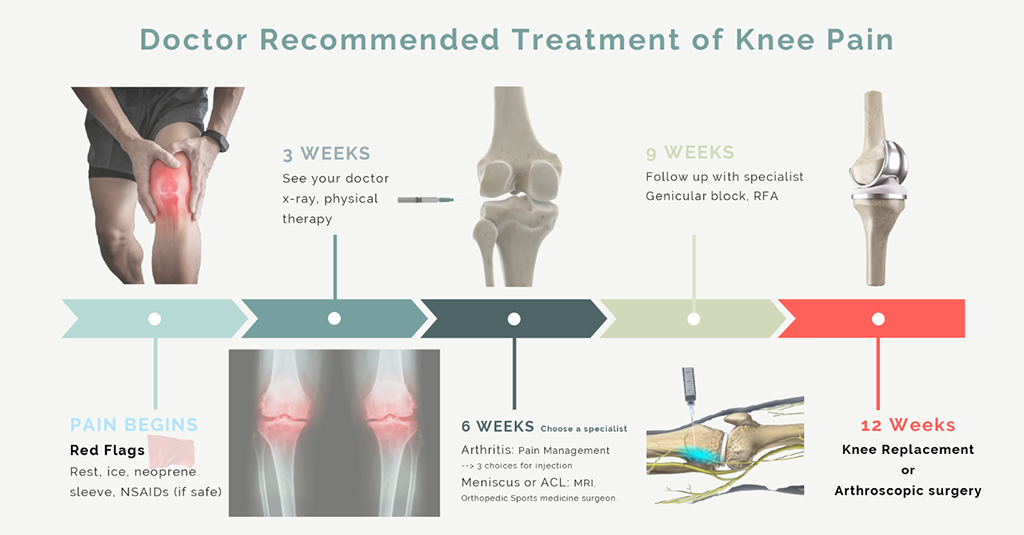
#1 Doctor Recommended 12-week Treatment Plan for KNEE PAIN
#1 Doctor Recommended 12-week Treatment Plan for KNEE PAIN https://bestpracticehealth.tv/wp-content/uploads/2022/10/treatment-plan-forknee-n.png 1024 535 Best Practice Health TV Best Practice Health TV https://bestpracticehealth.tv/wp-content/uploads/2022/10/treatment-plan-forknee-n.pngWelcome back. I’m Dr. Dan Lieberman, your host on Best Practice Live, where we offer in depth, evidence-based answers to our subscribers’ questions about spine and joint problems.
This month we’re reserving one day a week for a series of special videos. In these half-hour segments I will share with you the evidence-based playbook doctors use for the big 5 spine and joint problems.
By reading this article to the end you will learn best practices for the treatment of knee pain. You will learn the answers to common questions such as:
- When is knee pain an emergency and I need to act?
- How long should I wait to get help?
- Everyone says I need an MRI, are they right?
- What’s the best treatment for me?
If you or someone you love has knee pain then join me today, on Best Practice Live!
Red Flags signal when you need to act
Knee pain is scary! But most knee injuries heal up on their own and are nothing to fear. The causes divide up based on how your knee pain began. Did your knee pain start with an injury?
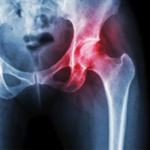
Yes. Knee pain that comes on slowly —without a recent injury— is typically due to arthritis. The three most common causes of arthritis are osteo-, rheumatoid, and >post-traumatic (arthritis that began with an injury a long time ago). All three types of arthritis can be verified by x-ray.
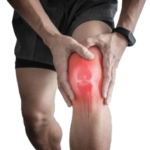
No. A sprain is the most common cause of knee pain immediately after an injury. Sprains typically heal up within three weeks.
In rare cases knee pain can be due to infection, tumors, or instability of the knee following an injury. Red flags are signs that you may have one of these rare conditions and you need to act to prevent further injury. To receive a checklist of red flags for knee pain enter your email address or phone number that receives texts in the below form.
Click here to see the red flag survey for knee
If you even one red flag, then you need to see a doctor right away. Otherwise, stop catastrophizing and let’s figure out what you need to do to shake this pain.
How long before I should get help?
If you’ve surfed the web for knee pain you probably feel overwhelmed. Don’t be. Your action item is simple: if your knee pain is not better after three weeks of home care then you should get help from a doctor. Home care means rest, ice, a neoprene compression sleeve, and elevation. Don’t forget, if your doctor has approved them in the past, you can also take non-steroidal anti-inflammatory drugs like Aleve and Ibuprofen. I did a whole video on home care; if want more you can find it on YouTube or enter your email or text number and I’ll send it to you.
Lachman and McMurray tests and tell you the results), order an x-ray, and send you to therapy for 3 more weeks.
The x-ray is important. For one, it helps rule out all the bad stuff (tumors, fractures, infection, etc) mentioned above. Look closely at the radiologists’ report; the degree of arthritis shown determines what happens next.
- X-ray shows moderate-severe arthritis, and assuming you don’t get better with therapy, then you should see an orthopedic surgeon who specializes in joint replacement surgery. The surgeon will most likely offer you a steroid or Hyaluronic acid injection in an attempt to avoid knee replacement surgery.
- If you wish to avoid or postpone joint replacement surgery further, you have two options. Genicular nerve block followed by radiofrequency ablation reduces knee pain due to osteoarthritis 65% for around 10 months. Alternatively, stem cell derived protein or PRP injection have been shown to have similar results.
- X-ray shows at most mild arthritis. If this case the cause of the pain is not showing up on x-ray; most l likely it’s a soft tissue problem, like a meniscus or ACL tear.
Do I need an MRI?
MRI is indicated for those who fail home care and physical therapy —and have at worst mild arthritis on x-ray. Confused? I can’t blame you if you are. If having an MRI is your big issue, then stop here and take my online Knee Pain Assessment:
Your 3 Minute Knee Pain Assessment
Or, read more about MRI scanning for knee pain here:
The real purpose of the MRI is to look for a tear in your ACL or meniscus.
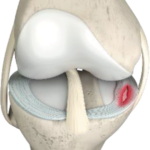
Meniscus tears cause locking, clicking, and popping of your knee. In people younger than 50 a tear may heal on its own. If knee pain is unbearable, the joint locked, or it fails to heal after more than 12 weeks then an orthopedic surgeon who specializes in sports medicine can speed healing by cleaning out the tear through an arthroscope with an operation called meniscectomy. Some meniscus tears in young people can actually be repaired in a similar fashion.
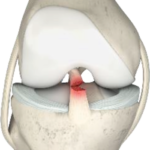
Partial tears of the anterior-cruciate ligament may heal on their own; however, complete tears should undergo reconstruction. ACL reconstruction can be done through an arthroscope. While the surgery is quick and can be done safely without hospitalization, the recovery takes 5-6 months and involves extensive therapy.
After 9 weeks if your pain persists then either arthroscopic (ACL or meniscus tear) or knee replacement surgery (arthritis) is your best option.

Dr. Dan Lieberman, M.D.
- Posted In:
- Knee Pain






